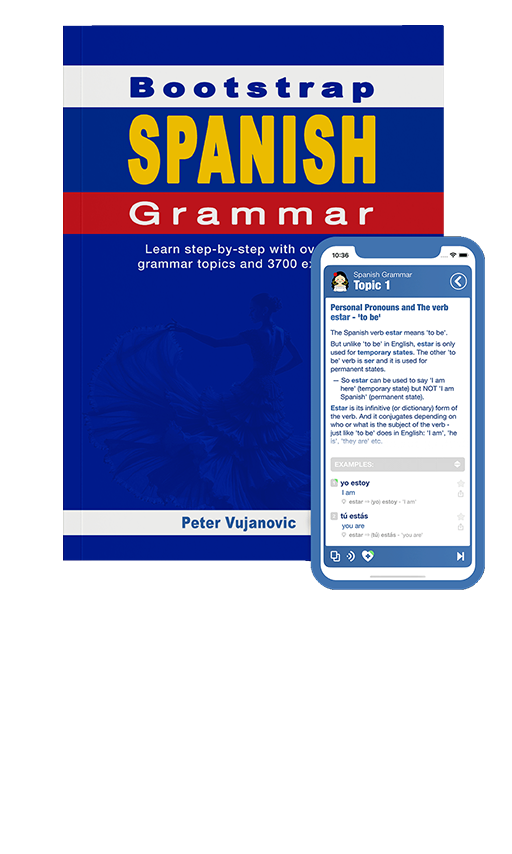Spanish grammar - Destinations with the preposition a |
|||
|
|||
The preposition a is equivalent to the English preposition 'to'. It is frequently used with the verb ir ('to go') to indicate direction or destination. Note that when a is combined with the definite article el, it forms the contraction al. When used with the article la it remains a la. In colloquial Spanish, questions involving ir tend not to be inverted. |
| Examples: | |
|
Juan va a la biblioteca.
Juan is going to the library. |
|
|
¿Tú vas al trabajo?
Are you (familar) going to work?
|
|
|
El profesor va al trabajo.
The teacher is going to work.
|
|
|
¿María va a la tienda?
Is María going to the store?
|
|
|
Nosotros vamos a la playa.
We (masculine) are going to the beach.
|
|
|
¿Nosotras vamos a la oficina?
Are we (feminine) going to the office? |
|
|
¿Vosotros vais al cine?
Are you (informal, masculine, plural) going to the cinema? |
|
|
Vosotras vais a la fiesta.
You (informal, feminine, plural) are going to the party. |
|
|
Ellos van al restaurante.
They (masculine) are going to the restaurant. |
|
|
¿Las niñas van a la escuela?
Are the girls going to school? |
|
|
¿Ustedes van al hospital?
Are you (formal, plural) going to the hospital? |
|
|
¿Vas tú a la playa?
Are you (familar) going to the beach? |
|
|
¿Vamos nosotros a la tienda?
Are we (masculine) going to the store? |
|
|
Vamos a la biblioteca.
We are going to the library. |
|
|
¿El doctor va al hospital?
Is the doctor going to the hospital? |
|
|
¿La señora Pérez va al banco?
Is Mrs. Pérez going to the bank?
|
|
|
El señor Sánchez va al banco.
Mr. Sánchez is going to the bank. |
|
 |
|




